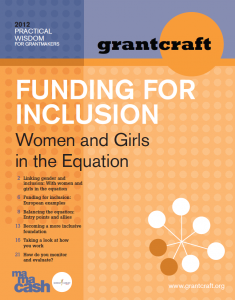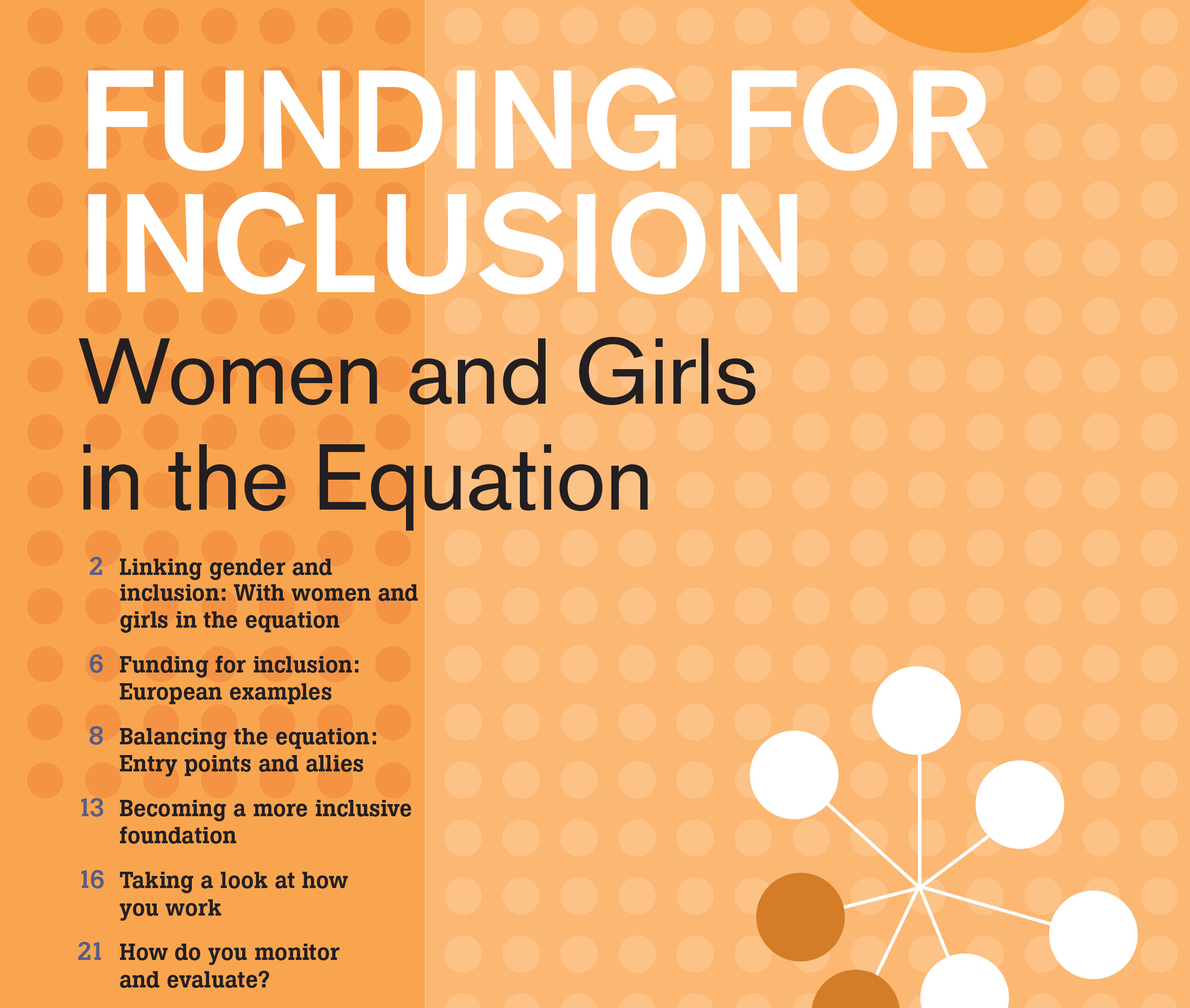Funding for Inclusion: Women and Girls in the Equation
“Just do it,” said Kathleen Cravero-Kristoffersson, President of Oak Foundation when asked to give the ultimate recommendation to foundations as to how they can mainstream gender in their programs and operations.
 The 23rd EFC Annual Assembly and Conference entitled Peace for Social Justice: A Role for Foundations in Belfast provided the stage for the launch of the newest GrantCraft guide Funding for Inclusion: Women and Girls in the Equation. The guide draws on the experience of foundations in 15 countries in Europe and provides a wealth of examples for reaching out and including women and girls through targeted programs or by mainstreaming gender in thematic or regional projects and operations.
The 23rd EFC Annual Assembly and Conference entitled Peace for Social Justice: A Role for Foundations in Belfast provided the stage for the launch of the newest GrantCraft guide Funding for Inclusion: Women and Girls in the Equation. The guide draws on the experience of foundations in 15 countries in Europe and provides a wealth of examples for reaching out and including women and girls through targeted programs or by mainstreaming gender in thematic or regional projects and operations.
At the launch session on 7 June during the EFC conference, Kathleen and Adrian Arena, Director of the International Human Rights Program at Oak Foundation were interviewed by Jo Andrews of ARIADNE on how they had ventured to ensure gender issues were addressed at all levels of their organisation. Kathleen noted that when she became president, Oak already had a program focusing on the rights of women and girls which provided a solid starting point to amplify gender across the foundation. Connecting the teams that managed the different mainstream Oak programs with the experience and expertise built-up in this women’s program, in combination with some ‘soft coercion’ from the part of the leadership, has lead in Oak Foundation to a process of systematic reflection on gender dimensions and indeed to organisational transformation. As a recent example, Kathleen mentioned the Oak environmental program in India which was redesigned on the basis of an extensive gender review. Adrian highlighted that the teamwork with the gender experts was very productive – “helping us move beyond working in silos”- and elaborated on some of the shifts in the Human Right program that had resulted from a similar exercise.
The opening plenary of the EFC conference featured an exciting musical act called Different Drums alluding to the decibels from traditional “protestant” and “catholic” drums that used to affirm religious identities. In Different Drums all of these “identity drums” play together and – also adding an African djembe – the group made a loud statement for inclusion. Indeed, peace is about inclusion and so is societal progress. While religious identities were prominent in the Ulster troubles, exclusion can be based on all sorts of aspects of our identity. And identities are layered. In all of its efforts to build peace, the Community Foundation for Northern Ireland has addressed gender (in)equalities and from early on they acknowledged the critical role of women in supporting their communities and building peace. Nowadays the gender lens applied by CFNI captures issues like (young) male depression and suicide.
In the work of foundations in Europe, girls and women are not always brought into the equation. Gender identities and interests are easily overlooked because – visible as the differences between sexes may be – it is not always that obvious how these differences influence societal realities. The good news is that this can be remedied. First one needs an entry point. Among the many practical examples and recommendations, the new Grantcraft guide shows how staff in foundations uses data and stories to start dialogues with colleagues, grantees, and partners on gender. Along these lines, Jo alluded in her introduction to the EFC Conference session to the data on differences between the realities of kids of male and female prisoners in the UK; the vast difference in educational attainment between male and female cohorts of kids whose parents were immigrants to the UK from the Caribbean.
But the guide goes beyond entry points by drawing on experiences of a variety of foundations and showing a number of practical measures that can help you systematically transform your programs and your foundation, along paths similar to the one taken by Kathleen and Adrian in Oak. Networks and expertise are critical ingredients in the process. After the double interview of the Oak management, during the second half of the session, at roundtables, participants looked from a thematic angle at gender and migration, gender in youth programs, and gender in democratization and human right programs. At these roundtables, practices were shared and complexities as well as easy opportunities to bring women and girls into the equation were highlighted.
For those who missed the conference or the session and all others who decide to follow Kathleen’s advice on gender mainstreaming and “just do it,” I hope you will find the wealth of ideas in this new Grantcraft guide inspiring. You may not be able to replicate any experience lock, stock and barrel, but I think you will find that the diversity of practical ideas makes the guide a source of inspiration. Together with your team you can give the quite practical recommendations your own twist and become (even) more inclusive.
The guide Funding for Inclusion: Women and Girls in the Equation was co-commissioned and co-edited by Mama Cash. A financial contribution from Barrow Cadbury Trust made the project possible. The guide can be downloaded free of charge from www.grantcraft.org.
For more on the 23rd EFC Annual Assembly and Conference, follow the link to the EFC website where among many other things you can hear Different Drums. The GrantCraft guide was launched on the second day of the EFC conference. Lisa Philp and I followed a number of sessions and plenaries. For more on the conference, check-out Lisa’s #AGA23 tweets at @grantcraft and @howtogive, or Rosien's @herweijer.


